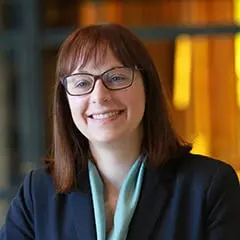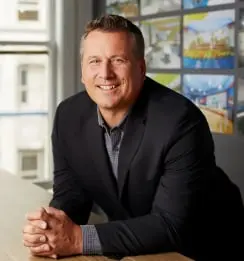 | 1 LU / HSW |
 | 1 LU / HSW |
Satisfying physiological needs is fundamental to achieving growth in Maslow's Hierarchy of Needs. Being able to use the restroom to tend to bodily functions is a physiological need, for everyone. Today, mainstream buzzwords like gender-neutral restrooms, non-gendered restrooms, and inclusive restrooms have a narrowly defined architectural scope. They solved a need, their effectiveness is not the topic of this conversation. How can architecture meet our physiological needs while also solving safety, equity, inclusion, and access concerns of today What if restrooms were re-imagined to provide safety, comfort, and dignity to all users? The presenting team will discuss how individual and private restrooms are becoming commonplace and serving the entire population. Good architectural solutions are those that solve a need for a specific population but also improve the experience of all users. The presentation will include implemented examples from K12 and Community Colleges.
Learning Objectives:

Ty is B&D’s West Coast Functional Director. Ty’s nationwide experience has allowed him to oversee $30 billion in program master plans for public agencies, municipal organizations, and PK-14 clients. In the last five years, his expertise has produced $550 million in designs that are under construction or completed in the Bay Area. As the Director, Ty has redefined the methodology of design management, program & project management, budget forecasting, master schedule strategy, and planning services.

Heidi brings a combination of commitment, drive, and sensitivity to each project. She is adept at leading immersive workshops, engaging with clients and user groups, to transform their vision and needs into active environments for learning. Heidi is leading conversations across the country based on her research of the key design components that contribute to safety and security of inclusive restroom design. Heidi is the 2018 recipient of the AIA Minnesota Young Architect Award.

Lance believes that design should be thoughtful, innovative, expressive, and inclusive of all people it serves. These important attributes rooted in his process capture the essence of Human by Design in each project he helps his clients achieve. Lance’s background includes project planning, conceptual design, design development, project coordination, and construction oversight for various civic, cultural, and educational projects. With over 20 years of experience, he is able to communicate effectively with clients, stakeholder and community groups, engineers, and contractors. Lance’s approach to every project includes all parties to ensure a successful and timely completion, while exceeding his client’s expectations. An active member of AIA East Bay, Lance finds satisfaction in creating built environments that inspire community interaction and fulfillment.
This track addresses the Response to real-world events and experiences that impact our daily life and our ability to function normally and be productive. The response to these occurrences is reflected in the learning environments we create and leads to the question – how can schools respond to real-world crises in a way that supports the well-being of occupants and our students' learning journey? How do we respond with approaches and strategies that may be used to balance the inability and lack of needed financial resources to address deficiencies within our learning environments’ infrastructure? Topics expand on the Art approach to the theme, but also include Science in the form of findings and outcomes through case studies and examples of successful responses to real-world conditions and events such as the COVID-19 pandemic, climate change, declining student enrollment, economics, equity, and other topics.
Primary Core Competency
Educational Visioning: Exhibits an understanding of best and next practices related to educational leadership, programming, teaching, learning, planning and facility design. Establishes credibility with educators, community members and design professionals while conceiving and leading a community-based visioning process. Demonstrates the ability to articulate the impact of learning environments on teaching and learning and uses that ability to facilitate a dialogue that uncovers the unique needs and long-range goals of an educational institution and its stakeholders – translating that into an actionable written/graphic program of requirements for the design practitioner.